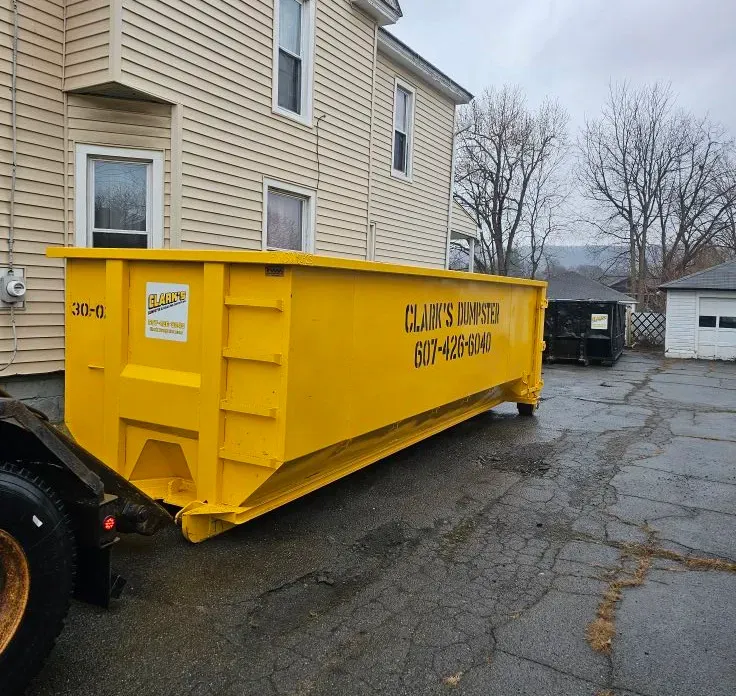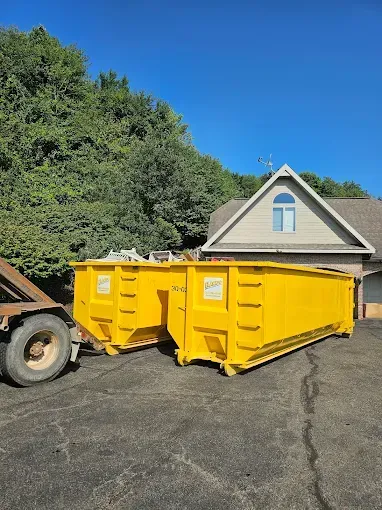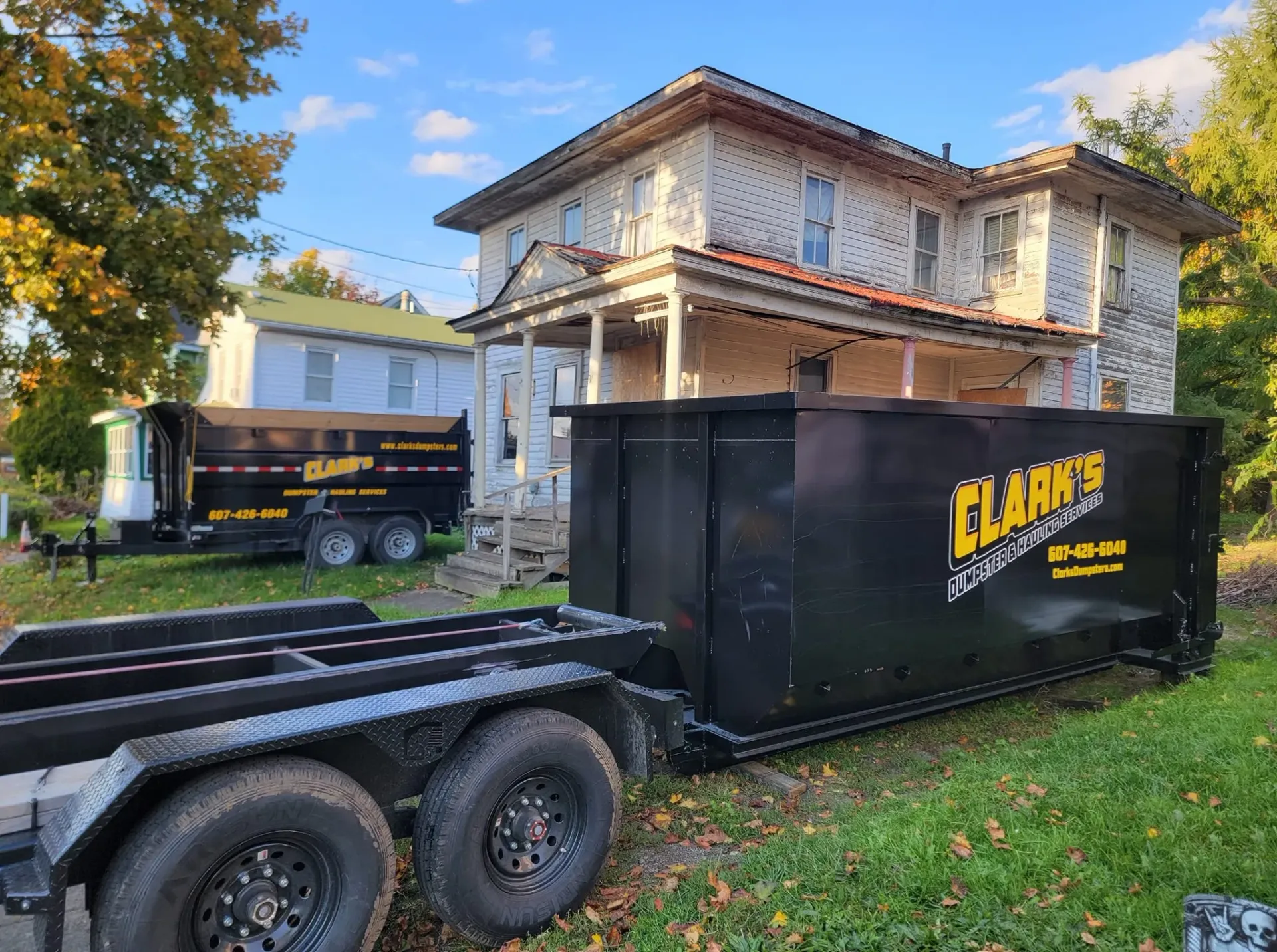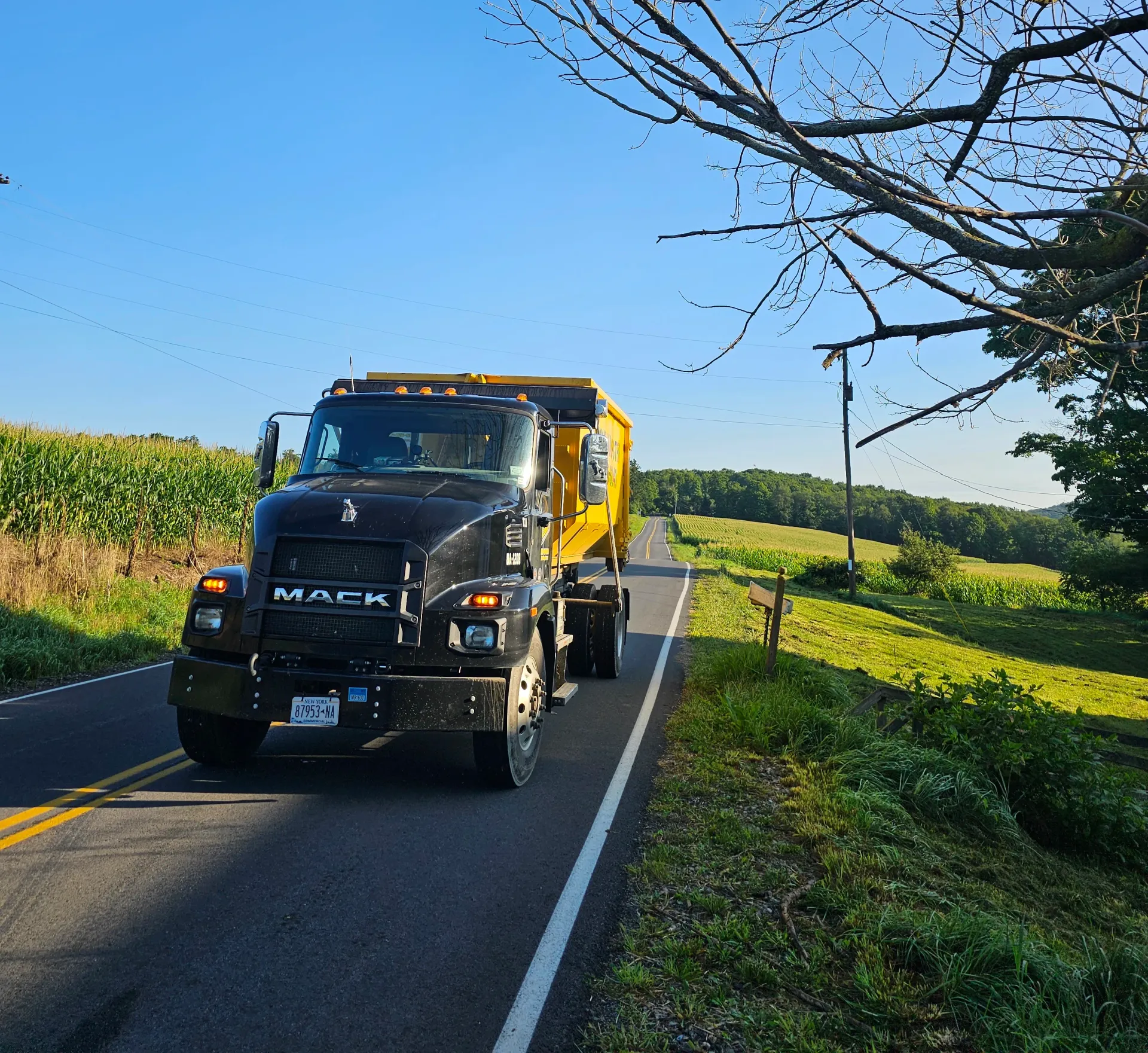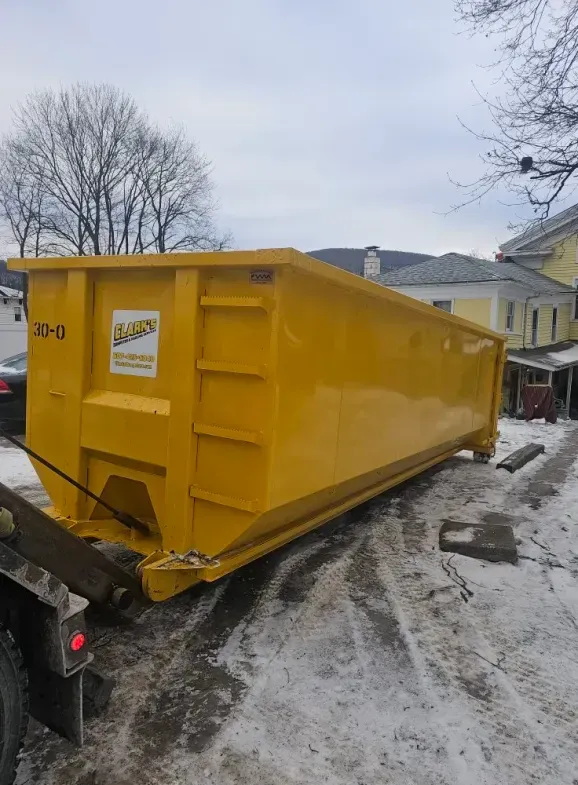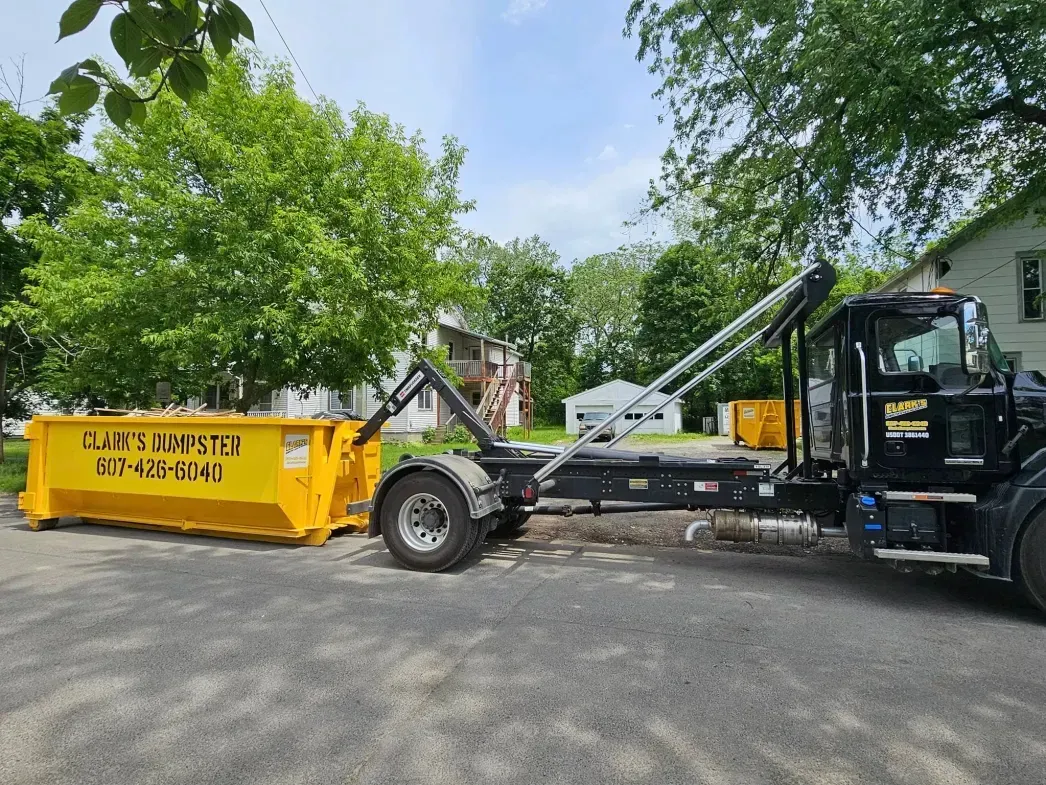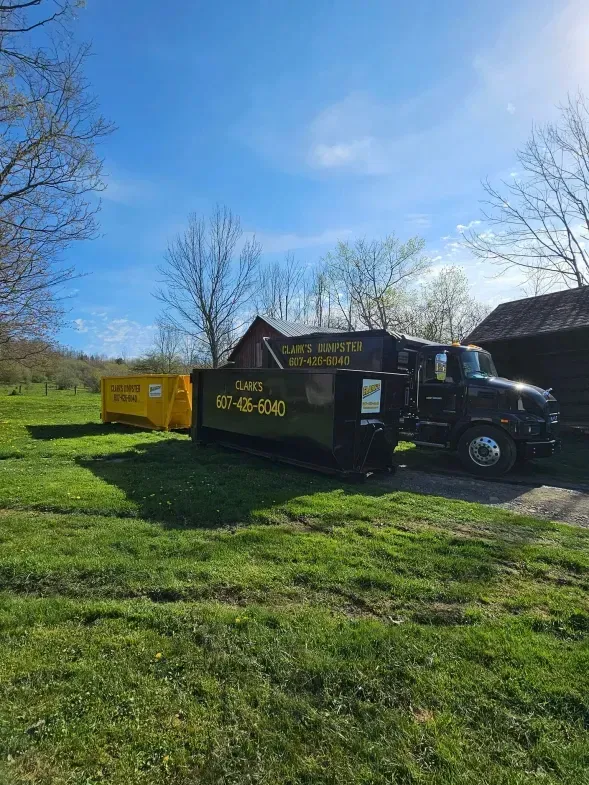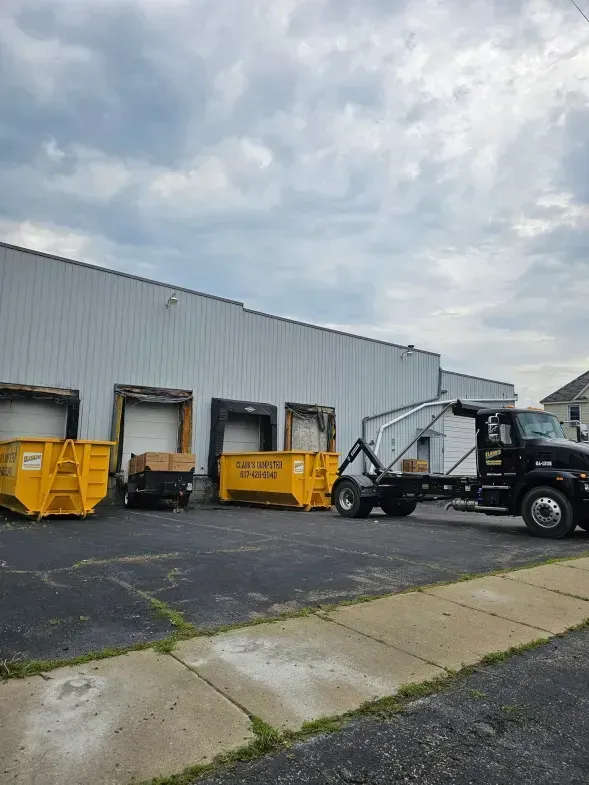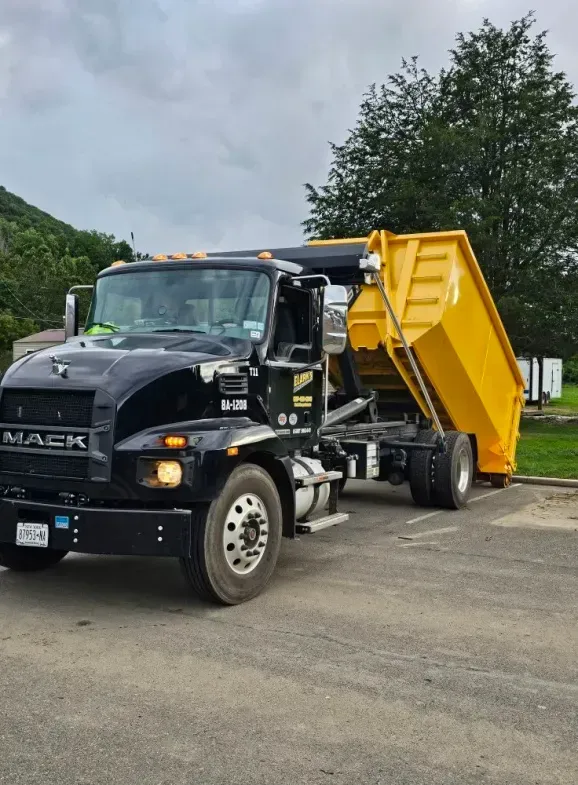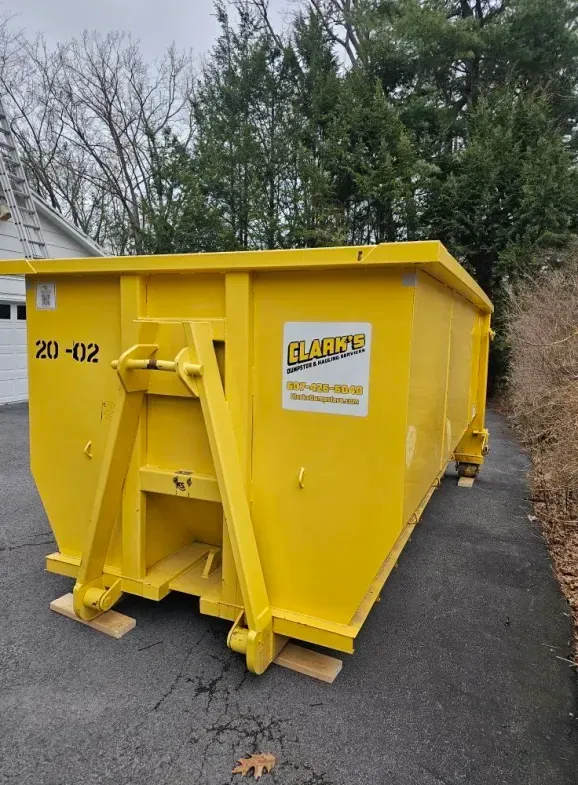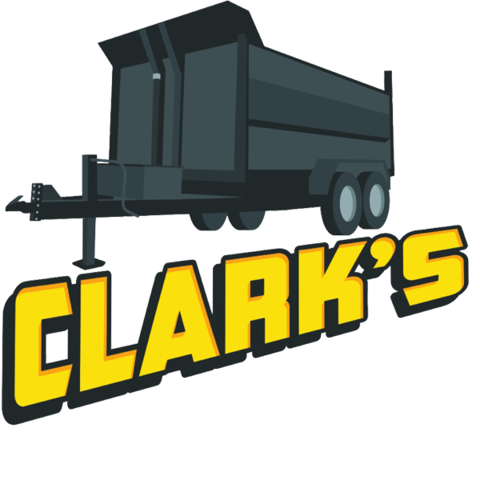Shed & Fence Removal in Ithaca: Best Bin for Mixed Materials
Shed and fence tear-outs generate a surprising variety of waste. A small outbuilding can contain framing lumber, plywood, roofing shingles, felt, windows, doors, and metal hardware. Fence removals often add long rails, tall posts, nails, brackets, and concrete footings. When you combine these materials with yard soil from pulled posts, the load becomes both bulky and heavy.
A clear local plan removes guesswork. Start by listing what you will remove, choose a roll-off that fits the debris mix, and map out where the container will sit so crews can roll wheelbarrows straight to the door. When the bin size, placement, and loading sequence are decided before the first board comes down, your demo moves faster, the driveway stays protected, and costs remain predictable.
How Dumpster Choice Shapes a Mixed-Material Project
The container you choose sets the pace for the entire job. A bin that is too small fills mid-demo and forces a halt while you wait for a swap. A bin that is too large may take up valuable space on a narrow driveway and add rental cost you do not need. For mixed shed and fence debris, the smartest approach is to match size to both volume and density.
Light but bulky materials such as framing wood and roofing panels stack well in mid-size containers. Dense materials such as concrete footings and wet soil reach tonnage limits quickly and are safer in smaller lifts. When the bin is matched to the debris mix, crews spend more time removing structures and less time managing overflow.
Pre-Booking Checklist for Ithaca Projects
Understanding the Debris Mix and Density
Write down each material you expect to remove. Common shed items include plywood panels, two-by lumber, shingles, roofing felt, small windows, doors, and mixed metal hardware. Fence projects add rails, pickets, tall posts, and concrete around post bases. Wood is bulky and fills space. Concrete and soil are dense and push weight limits even when the bin does not look full. Restricted items such as electronics, wet paint, and propane cylinders must be handled separately.
Capacity Compared to Tonnage
Every dumpster has a volume limit and a weight limit. They are not the same. A twenty yard roll-off may still exceed its tonnage cap with only a partial load of concrete or saturated roofing. Ask your provider how many tons are included with each size. Plan to load heavy debris in smaller lifts and keep the balance of the project in a mid-size container.
Placement, Access, and Surface Protection
Pick a flat, open spot near the work zone with enough clearance for the delivery truck to set down and retrieve the container. Protect asphalt or concrete with thick plywood, especially during freeze and thaw seasons. Keep a straight path from demo to dumpster so crews can move material safely and quickly.
Dumpster Sizes for Shed and Fence Projects in Ithaca
| Size: | Best Use for Mixed Materials | How Notes for Ithaca Projects the Dumpster Holds: |
|---|---|---|
| 10-Yard | Small shed demo, short fence runs, heavy footings | Ideal for concrete chunks and post bases with less risk of overweight |
| 20-Yard | Standard wood sheds, long fence lines, roof panels | Most popular size for mixed wood and light roofing debris |
| 30-Yard | Large garden sheds, multi-section fences, bulky wood | Good when volume is high and heavy debris is limited |
| 40-Yard | Multiple structures or estate-level cleanups | Works best where space allows and debris is mostly light wood |
How to use this table: if your load includes many concrete footings or wet soil, begin with a ten yard container for the dense material, then follow with a twenty yard for wood and roofing. If your debris is mainly wood and light metal, one twenty yard bin often covers the job.
Compliance, Utilities, and Helpful Local Resources
Tompkins County Recycling and Solid Waste operates the Recycling and Solid Waste Center at 160 Commercial Avenue in Ithaca. This is the county’s hub for restricted items such as electronics, batteries, and certain chemicals. City information and common questions about set-out rules, streetside placement, and seasonal services are available through City of Ithaca resources. For treated lumber and pressure-treated post guidance, the New York State Department of Environmental Conservation provides disposal and handling information. Before pulling posts or excavating near utilities, contact Dig Safely New York by dialing 811 so lines are marked before work begins. These quick checks prevent rejected loads, utility strikes, and fines while keeping your site safe.
Simple Prep Steps That Cut Time and Cost
Empty the shed fully, bag small trash, and box loose hardware and glass so loading is cleaner and safer.
- Stage pry bars, saws, and wrenches near the entry and set two ground zones for heavy items and light items to speed sorting.
- Lay plywood where the dumpster will sit to protect asphalt or concrete and to create a stable approach for wheelbarrows.
- Score or cut long rails and panels to manageable lengths so they stack flat inside the container and do not bridge the walls.

Incidents That Inflate Cost and Time
Several avoidable errors show up often on shed and fence projects. Choosing a bin that is too small forces a mid-project pause while you wait for a swap and usually increases cost. Ignoring tonnage caps leads to overweight charges even when the container looks only half full, since concrete and wet roofing add weight quickly. Mixing restricted items such as batteries or leftover paint can trigger a rejected pickup and a reload. Forgetting driveway protection leaves marks on soft surfaces during wet seasons. Calling for pickup after the bin is already overflowing delays the next phase of work and frustrates neighbors. A short planning session before the demo prevents all of these issues.
Pricing Basics and When a Second Bin Makes Sense
Dumpster pricing reflects the container size, the weight allowance included in the rate, the rental length, and any added services such as swaps or priority pickups. Local disposal fees and hauling routes around Ithaca also influence the final number. You keep costs in check by matching size to the debris mix, concentrating heavy material in the smallest bin that will safely hold it, and planning one scheduled swap rather than two unplanned trips.
Two bins are often cheaper than one wrong bin. A ten yard for concrete and post bases followed by a twenty yard for wood and roofing helps you stay under tonnage limits while giving you enough space for bulky materials. If you expect a large volume of shingles, ask your provider for a shingle weight estimate so the allowance is set correctly. For window glass, some haulers prefer boxed and taped bundles to reduce breakage during transport.
Weather and Site Safety for Ithaca Crews
Upstate weather affects both debris weight and traction. Rain increases the weight of wood and roofing, and snow makes surfaces slick. Cover material stacks with tarps when you pause work and keep salt or sand ready for walk paths in winter. Wear eye and hand protection when pulling nails and cutting panels, and keep children and pets away from the work zone. A tidy site is safer, faster to navigate, and easier for the driver to service, which reduces turnaround time at pickup.
FAQs: Shed and Fence Removal Dumpsters in Ithaca
What size dumpster works best for a typical backyard shed in Ithaca?
A twenty yard dumpster covers most wood sheds because it balances volume and maneuverability on residential driveways. If your shed has many concrete footings or a heavy roof, use a ten yard first for dense material and then load the twenty yard with wood and roofing so you stay within weight limits.
How much container capacity do I need for a fence tear-out?
A twenty yard roll-off usually holds seven to eight pickup loads of rails and posts, which fits many backyard fences. Long fence lines with many concrete bases can exceed tonnage even when space remains, so pair a ten yard for footings with a twenty yard for wood to control cost.
Can I mix wood, metal, and roofing in one dumpster?Can one dumpster cover an entire project?
Yes, most providers allow mixed construction and demolition debris. Keep prohibited items out and separate concrete if you are close to the weight allowance. Mixing allowed materials in tidy layers improves space use and makes hauling safer.
What is the simplest way to keep costs down on a shed removal?
Match bin size to the debris mix, load heavy items first in smaller lifts, and plan one scheduled swap if needed rather than waiting for an emergency exchange. Ask for an all-in quote that lists size, included weight, rental days, delivery, pickup, and per-ton overage so there are no surprises.
Where do I take batteries, propane cylinders, or old electronics from the shed?
Use the Tompkins County Recycling and Solid Waste Center on Commercial Avenue. The county site lists hours, accepted items, and special events, and it is the proper destination for e-waste and many household hazardous materials.
Advice for Ithaca Homeowners and Contractors
Before you begin, take time to think through your debris. Write down what you expect to remove, then choose a dumpster that matches both volume and weight. Place a ten yard bin aside for heavy items like concrete and soil, and use a twenty or thirty yard bin for bulky wood and roofing. Protect your driveway with plywood where the container will sit, and follow Tompkins County guidance for restricted materials. Call for pickup before the bin is full so your project stays on schedule. With a clear plan and the right Ithaca dumpsters, your shed or fence removal will be quicker, cleaner, and more affordable.
Secure Your Dumpster for a Smooth Cleanup
If you are ready to take down a shed or fence and clear your yard, book your dumpster rental in Ithaca New York today. Choose the right bin for mixed materials, set your delivery and swap schedule, and keep your project moving smoothly from start to finish.
Book your dumpster online Ithaca New York today and enjoy a fast, simple, and cost effective cleanup.
